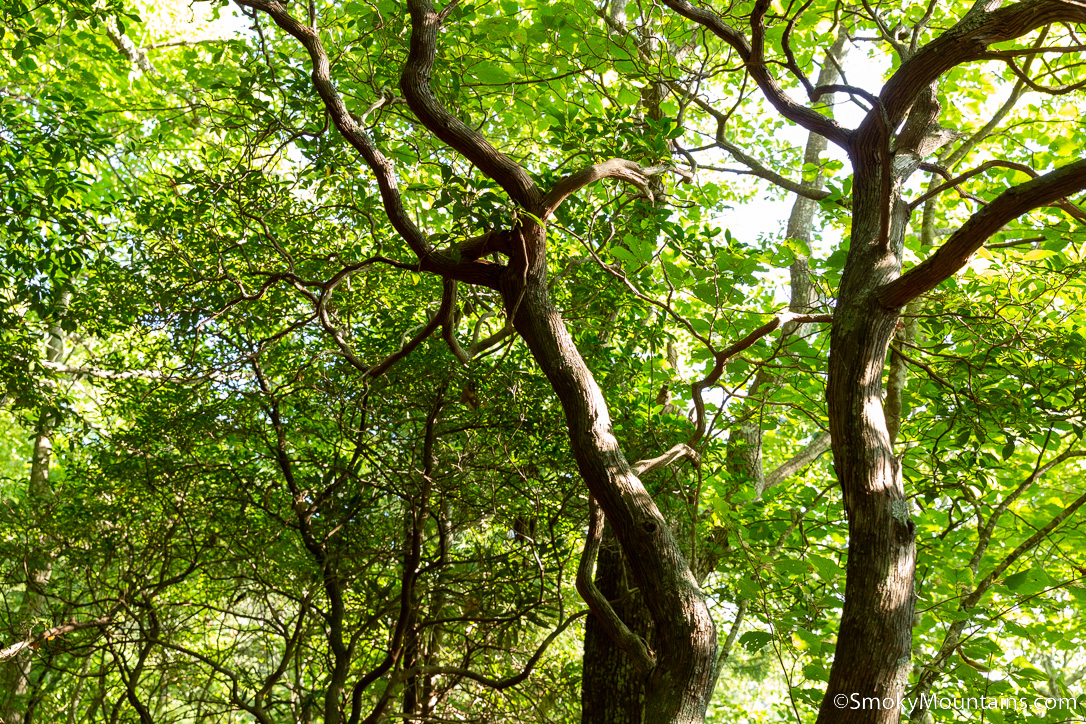If you’re fortunate, you might—might—spot a white squirrel on your visit to the Great Smoky Mountains, and if you are very lucky, you might see one albino squirrel in your lifetime. Such unusually colored critters are occasionally seen in the park. Meanwhile, one of the best-known hotspots for white squirrels in all of North America lies not too far away: the small city of Brevard, North Carolina, on the doorstep of the Pisgah National Forest.
What exactly is a white squirrel? How common are they? And where in the world do they come from? Read on for some details on these special creatures!
White Squirrels: Are They a Distinct Species?
North American white squirrels don’t compose their own species. There are a couple of naturally white-colored species of tree squirrels, but they’re only found in Southeast Asia. A free-roaming white squirrel in North America is simply a color morph of one of the native tree squirrels, which include eastern and western gray squirrels, fox squirrels, American red squirrels, and Douglas squirrels.
In the Southeast—the Great Smokies and broader Blue Ridge Mountains included—we’ve got eastern gray squirrels, fox squirrels, and red squirrels. White morphs of all three of these species have been documented in various parts of eastern North America.
Fox squirrels, the largest native tree squirrels, are usually orange-brown or orange-gray. The slightly smaller eastern gray squirrel is typically gray-coated with white underbellies. Red squirrels (sometimes called pine squirrels, chickarees, or—in the Southern Appalachians—mountain boomers) are the smallest of our tree squirrels and are—you guessed it—typically red or reddish-brown with a creamy belly.
Albino vs. Leucistic Squirrels
All white squirrels aren’t created equal. Many people assume a white-colored tree squirrel in North America to be an albino. Actually, though, albino squirrels are fairly rare. Albinism is a recessive condition characterized by the complete absence of the dark-colored pigment melanin.
Many so-called “albino squirrels” are actually not albino, but rather leucistic. Rather than completely lacking melanin specifically, leucistic squirrels have reduced levels of skin pigmentation across the board, a condition due to a genetic mutation.
There’s a straightforward way to tell an albino squirrel from a leucistic one. Albino squirrels have pink eyes, while leucistic individuals have normal, dark-colored eyes of the same hue as a typically colored squirrel.
Furthermore, leucistic squirrels often aren’t completely pure white: They frequently show vague grayish caps and dorsal stripes.
The lack of dark pigment in an albino squirrel’s eye gives it relatively poor eyesight, worsened by the greater likelihood of eye damage from bright sunlight. Needless to say, a tree squirrel with poor vision is unlikely to survive long: It’s liable to be more vulnerable to predators such as foxes, housecats, and birds of prey, for one thing, and also more likely than a non-albino squirrel to misjudge distances and topple out of canopies.
The mutation causing leucism, meanwhile, is liable to produce occasional white squirrels in a given population, say, of gray squirrels, and those white squirrels, possessing more normal eyesight, might have a better shot at survival than their albino counterparts. That said, white squirrels in general may be more exposed to predation risk on account they can’t rely on the camouflage that helps a normally colored grayish, brownish, or reddish tree squirrel blend in with bark and vegetation.
At the same time, some evidence suggests white squirrels may, in term, be somewhat less likely to be killed by cars—a major source of squirrel mortality, needless to say—due to their greater visibility to motorists.
White squirrels don’t seem to be subject to any ostracization, aggression, or other special treatment by their normal-colored kin. And they freely interbreed with the latter.
Incidentally, there are also black color morphs among squirrels: melanistic individuals owing their dark fur to an overproduction of melanin. Indeed, in some localized areas, black-gray or fox squirrels are more common than squirrels of the species’ typical pelage.
Where Are White Squirrels Found?
You could conceivably spy a white squirrel anywhere that tree squirrels exist (and that describes most of North America, mind you), as both albinism and leucism can occur due to random genetic mutation or recessive gene expression. It’s been estimated that the odds of a female gray squirrel bearing an albino pup is about one in 100,000: an uncommon, but periodic, situation, in other words.
Certain areas are particularly known for white squirrels, including so-called “colonies” where the albino or leucistic condition has been allowed to perpetuate from some source individual or a handful of individuals. Because of their novelty, white squirrels have often been spared by humans, raised in captivity, and intentionally released. And most of the white-squirrel colonies are located in urban areas, where city or town laws often exist protecting the animals, and where these color morphs may find greater protection from predators (and, again, perhaps survive better in a landscape dominated by cars).
Such hotspots of white squirrels are widely scattered in North America, from California to Florida. A notable colony of albino squirrels, for example, calls Olney, Illinois home. The campus of Iowa State University is well-known for leucistic fox squirrels.
And Brevard, North Carolina, which we mentioned earlier, is famous for its leucistic gray squirrels: a very healthy population of these white squirrels, in fact, maybe accounting for a thousand or so individuals. Research suggests one in every three gray squirrels in Brevard is white-furred, which is a notably high proportion.
This celebrated population of protected white squirrels—the namesake of Brevard’s annual White Squirrel Weekend—is thought to have spread leucistic squirrels, by natural dispersal, more widely throughout the highlands of western North Carolina.
So you do have a chance of seeing a white squirrel in the Great Smokies, though the odds are low. If you’re really keen on seeing one of these snowy squirrels, though, you’ve got one of the great spots anywhere in the form of Brevard—not least the campus of Brevard College—not too far away!




